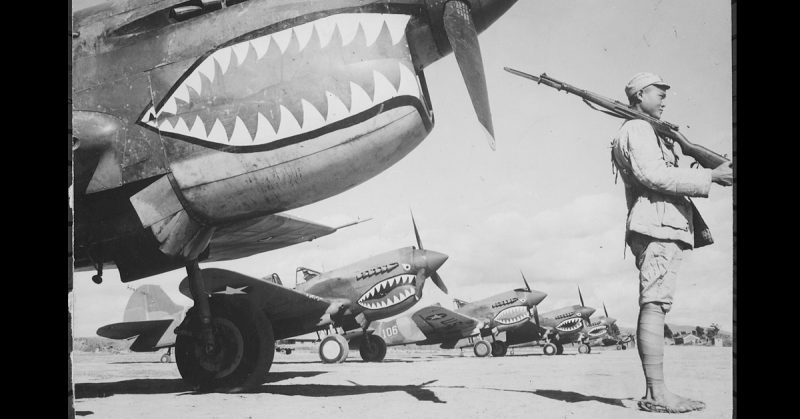When Frank Losonsky was 20 years old, a recruiter asked if he’d be willing to go to Asia and join volunteers who were helping China fight off the Japanese invasion.
That exchange occurred in May of 1941. 75 years later, at the age of 96, Losonsky is one of three known survivors of possibly the most famous fighter plane group in history: the Flying Tigers.
They flew US-manufactured Curtiss P-40 Warhawks painted with the iconic shark-mouth design.
During the group’s short existence (1941-42), 311 people were recruited into what was officially called the 1st American Volunteer Group.
They began with 99 planes but managed to pile up an impressive combat record in only seven months, destroying 297 enemy aircraft in Burma, Thailand, and China. Two of their pilots qualified as aces – shooting down five enemy aircraft each.
Experts believe that the Tigers were a strategic asset for the US. By keeping Japan focused on China, the US had time to ramp up for war, manufacturing tanks, planes and weapons.
Losonsky was a crew chief in the 3rd Squadron – maintaining three and sometimes four aircraft. He also helped deliver bombs and retrieve salvage parts to keep the planes in the air.
Losonsky climbed into a P-40 for the first time since the war. It was part of a Flying Tiger Reunion that was sponsored by the Commemorative Air Force, which preserves historic warbirds.
Losonsky rode calmly in the back of a two-seat trainer while Bernie Vasquez of the Texas Flying Legends Museum took him through two barrel rolls.
“No problem,” said Losonsky just after climbing out of the plane.
There were two women who served as nurses in the Flying Tigers, but the group was primarily made up of young male officers and enlisted men.
Due to US law, all volunteers in the Tigers had to resign from the military. That put them at increased risk. If captured by the Japanese, they could be executed as spies.
The Flying Tigers originated as a secret operation approved by President Franklin Roosevelt.
Recruits had to have fake identities assigned to them before they could ship out.
Losonsky had a fake passport that said he was a missionary. Others were plantation managers, cowboys, and some were circus performers.
The P-40 Warhawk was a rugged plane that allowed the Tigers to execute steep dives, catching the Japanese off guard as they dove in from above.
Losonsky still recalls a day in March of 1942 when the Japanese attacked their base. The Japanese planes shot all the equipment as they flew high above. The Tigers had to take cover in trenches.
Three years ago, the graves of hundreds of Chinese troops that died fighting alongside the Flying Tigers were discovered. The Chinese pledged to restore it and protect it, but little has been done.
The Tigers disbanded by July 1942. Their mission was assigned to US Army airmen. In all, 23 Flying Tigers were killed or went missing, CNN.com reported.
Some had to find their own way home. Losonsky found himself in South Africa with no way to get to the States. The consulate advised him and his friends to make themselves “undesirable.” They went to a nice hotel and broke some of the furniture. That got them classified “undesirable” and put on an ocean freighter heading to the US.
Flying Tigers leader Claire Lee Chennault revealed the origin of the iconic shark mouth design in his 1949 memoir, “Way of a Fighter.”
“Our pilots copied the shark-tooth design on their P-40s’ noses from a colored illustration in the India Illustrated Weekly depicting a British Royal Air Force squadron in the Libyan Desert with shark-nose P-40s,” Chennault wrote. “Even before that the German Air Force painted shark’s teeth on some of its Messerschmitt 210 fighters.”
The Flying Tigers are remembered for more than the designs on their airplanes. They are the volunteers who traveled halfway around the world to risk their lives for their country in a secret operation.
Today, only three Tigers are known to be alive. Losonsky, armorer Charles Baisden, 96, and the last living pilot of the Flying Tigers, Carl Brown, 99.
